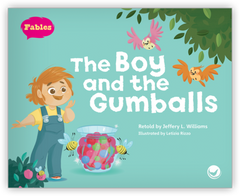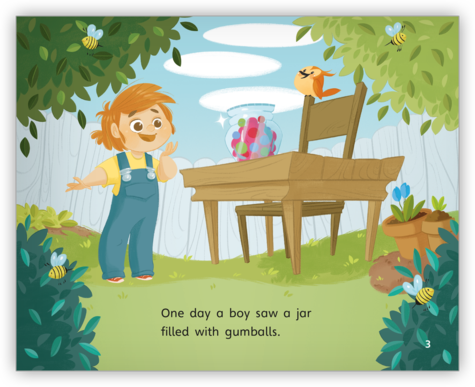By Paula Dugger, M. Ed., Guest Blogger
Summer is filled with family vacations, camps, outdoor activities and a break from school. It’s a time to do away with all those structured learning activities found in the classroom during the school year. Or is it? Summer reading is important, but some parents need help understanding the impact of summer reading, as well as finding great books for their kids. Keep reading to find fast facts and fun activities to help parents make summer reading fun!
An early successful start to reading is the key to academic success. It is important that parents work hand-in-hand with schools outside the classroom in providing positive reading experiences. Those who read well will read more, which leads to greater achievement along the way. So, finding fun-filled and effective ways to engage K – 2 kids in reading during the summer should be a high priority in every home. For striving readers, it can also mean closing the achievement gap and creating a love of reading before the next school year.
“ Children are made readers on the laps of their parents. ” – Emilie Buchwald
Setting aside family reading time where parents read books aloud daily is vital. A study in 1995 (Hart/Risley) found that by age 3, there is a 30-million-word-gap between children in lower socio-economic families versus higher socio-economic families, often due to a lack of literacy opportunities in the home. Children need to hear and be exposed daily to lots of words/language in order to prevent the gap from widening. Reading aloud to children, and listening to children read once they are able, will help parents narrow or prevent a gap that could negatively influence struggling readers.
 Books for summer reading should always consist of themes that interest the child.
The Boy and the Gumballs
is one fun story about sticky messes in the summer heat. However, it is equally important for parents to understand the value of having leveled books that match their kids' guided reading levels. Hameray Publishing has a
level list
that is an excellent tool for helping parents match the reading levels expected for each grade level of their children. Also, classroom teachers can guide parents to a child’s reading level throughout and at the end of each school year.
Books for summer reading should always consist of themes that interest the child.
The Boy and the Gumballs
is one fun story about sticky messes in the summer heat. However, it is equally important for parents to understand the value of having leveled books that match their kids' guided reading levels. Hameray Publishing has a
level list
that is an excellent tool for helping parents match the reading levels expected for each grade level of their children. Also, classroom teachers can guide parents to a child’s reading level throughout and at the end of each school year.
To help parents see specific features in different leveled books, which will help match their children with books on their level, have them take a peek inside each of the Hameray titles at specific guided reading levels by following these instructions:
- Click on the “Shop by Level” tab.
- From there choose a specific level to locate books
- Select a book by clicking on its cover.
- You can see a few pages of text by clicking on “View details.”
 Helping parents know what to look for in terms of simple sentence structure and length, along with vocabulary and text features, will help parents assist the young reader in selecting the right books. This is useful for children who are buying or borrowing from the library, as books do not come clearly leveled. Having the reader read the first page or two of any book is also an indicator to determine if the book is within the range of his or her ability.
Helping parents know what to look for in terms of simple sentence structure and length, along with vocabulary and text features, will help parents assist the young reader in selecting the right books. This is useful for children who are buying or borrowing from the library, as books do not come clearly leveled. Having the reader read the first page or two of any book is also an indicator to determine if the book is within the range of his or her ability.
The public library is a wonderful place for parents to begin locating fun books. They will be able to find a large assortment of narrative texts and nonfiction books for kids on just about every subject. My memories of summer reading take me back to visiting the local public library each week with my mom and sister to check out four or five books at a time. The library had incentives, and we were rewarded for the number of books, pages, and minutes read over the summer. I couldn’t wait to return each week to get my stickers and pick up new books to enjoy while traveling or during lazy summer afternoons of reading time.
Incentives that help motivate or enhance children’s desires for daily reading are well worth parents' time and effort. Parents can also try allowing their children to help shape the goals and incentives. They can also create family and individual charts along with individual reading logs as a reminder of the task. This also gives kids visual reminders of their hard work and a sense of accomplishment for the goals they meet. Encourage parents to check with local libraries, schools, and organizations for programs and incentives to encourage reading during the summer.
Summer is an exciting time for kids, and reading can easily be incorporated into anything they do. This is especially true if the whole family is participating in the activities together. Parents need to understand that kids can be engaged in reading about things they are involved in such as camps, vacations, or outdoor activities.
If
 a visit to the zoo is on the list, parents can ignite interest by helping their children choose informational books and animal stories for kids. Parents can also build interest by making predictions about which animals will be seen at the zoo, and allowing their children to share information about different animals during the visit to the zoo. Some follow-up and extended activities that will help improve reading and writing, as well as comprehension skills, include having the child author and illustrate his or her own zoo or animal books. Here's a list of summer activities that can parents can match with book themes and leveled guided reading books.
a visit to the zoo is on the list, parents can ignite interest by helping their children choose informational books and animal stories for kids. Parents can also build interest by making predictions about which animals will be seen at the zoo, and allowing their children to share information about different animals during the visit to the zoo. Some follow-up and extended activities that will help improve reading and writing, as well as comprehension skills, include having the child author and illustrate his or her own zoo or animal books. Here's a list of summer activities that can parents can match with book themes and leveled guided reading books.
Reading must be
 a part of a child’s daily routine. The amount of time spent reading has a direct correlation to academic success. I posted a blog entry called
The Importance of Reading 20 Minutes Per Day
previously for Hameray, which parents may find useful. However, I would encourage parents to increase the number of minutes of reading per day during the summer to no less than thirty minutes and up to sixty minutes per day if possible. Without a structured classroom setting, striving readers can fall further behind during the summer.
a part of a child’s daily routine. The amount of time spent reading has a direct correlation to academic success. I posted a blog entry called
The Importance of Reading 20 Minutes Per Day
previously for Hameray, which parents may find useful. However, I would encourage parents to increase the number of minutes of reading per day during the summer to no less than thirty minutes and up to sixty minutes per day if possible. Without a structured classroom setting, striving readers can fall further behind during the summer.
Parents are a child’s first teachers and setting aside time for family reading each day will help the child develop a love for reading and be prepared for the next challenge-filled school year. Bottom line: kids who read more will succeed! Click on the chart above, and you'll be able to download tips I created for parents to help K–2 readers during the summer!
From the Joy Cowley Collection to paired texts in Story World Real World and Fables & the Real World , there are hundreds of informational texts and narrative books to delight your K – 2 readers. You can also find other great blog entries about the importance of reading over the summer. I invite you to visit these and to revisit this blog often for more lesson ideas and teaching tips.
 Paula is an educational consultant who has previously served as a Reading Recovery Teacher/Teacher Leader, first grade teacher, Title I and high school reading teacher, and a Reading Coordinator. If you like what you read here, you can enjoy
more from Paula on our blog
.
Paula is an educational consultant who has previously served as a Reading Recovery Teacher/Teacher Leader, first grade teacher, Title I and high school reading teacher, and a Reading Coordinator. If you like what you read here, you can enjoy
more from Paula on our blog
.

















































![6 Fun and Easy Activities to Practice Sequencing [Grades K-1]](http://www.hameraypublishing.com/cdn/shop/articles/Red_Typographic_Announcement_Twitter_Post-5_bf1ae163-a998-4503-aa03-555b038d1b76_600x.png?v=1689961568)
![Leveraging Prior Knowledge Before Writing and Reading Practice [Grades 1–2]](http://www.hameraypublishing.com/cdn/shop/articles/Red_Typographic_Announcement_Twitter_Post-4_600x.png?v=1689961965)
